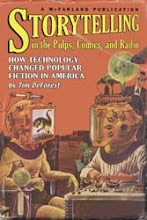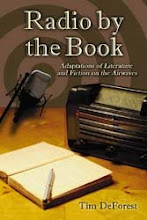Read/Watch 'em In Order #168
The third Tom Corbett novel--"On the Trail of the Space Pirates," by Carey Rockwell--was published in 1953. And, by golly, it's a fun one. Of course, it features Space Pirates, which means it is legally required to be fun. But, as with the first two Corbett novels, Rockwell (whoever he or they really were) does great job of telling a fast-paced Space Opera.
The book begins with what should be an easy mission. Captain Strong, along with the three cadets he commands, are ordered to bring the Polaris to an exhibition on Venus that is designed to show off man's latest scientific achievements.
Whether it was a good idea to bring all man's latest achievements to one spot is open to debate. Especially since two men manage to steal a device that allow them to access any vault or cargo hold on any ship that plies the spaceways.
The two escape from Venus and go a-pirating, concentrating at first on stealing weapons from other vessels to arm their own ship. The identity of the pirates are known, so Strong and the boys take on the guise of criminals, visiting the sleazier neighborhoods of Luna City, Marsopolis and other cities to try to get a line on the pirate hideout.
They learn that one of the pirates is connected with a ruthless crook named Bull Coxine. Bull is currently a prisoner on the appropriately named Prison Asteriod. Strong and the cadets head there to question him, only to witness a pirate attack on the prison. There's a mass escape, with Bull leading the prisoners aboard the pirate ship. Tom, thinking quickly, puts on a prisoner's uniform and joins the escapees.
Bull takes over--in fact, he's been the brains of the operation all along, smuggling out messages while he was a prisoner. He plans on looting everything that can be looted. Working from a hideout located somewhere in the asteroid belt, he begins out smarting the Solar Guard on a regular basis. Tom, working from the inside, tries to find a way to sabotage the pirates, but he's soon forced to flee.
Eventually, the Solar Guard tries to lay a trap, luring Bull into attack a ship the pirate thinks is carrying the 20-million-credit payroll for workers on Titan. But Bull is still one step ahead of the good guys. He ruthlessly sacrifices one of his men to spring the trap, then goes after the real payroll, being carried aboard the Polaris by Tom, Roger and Astro.
Tom soon finds himself forced to choose between betraying the Solar Guard or watching his two friends die. All that might save him is if one long-shot trick he set up just before capture pays off. It it doesn't, then Bull Coxine will be able to carry out a plan that might garner him his own fleet and perhaps even take over the Solar System.
The novel often plays out like a hard-boiled detective novel, with the good guys going undercover and following up what clues they can find to stop Bull. But, as it usual with Tom Corbett tales in any medium, the tale emphasizes not just the need for courage, but for intelligence, training and the ability to think under pressure. The Tom Corbett novels are now at 3 wins and no loses.






























